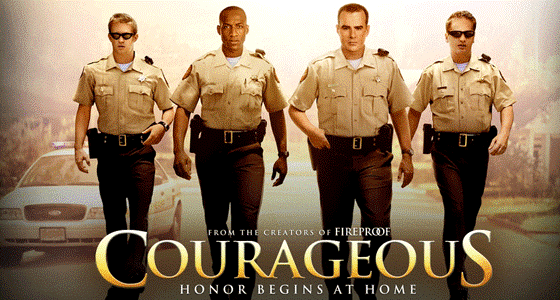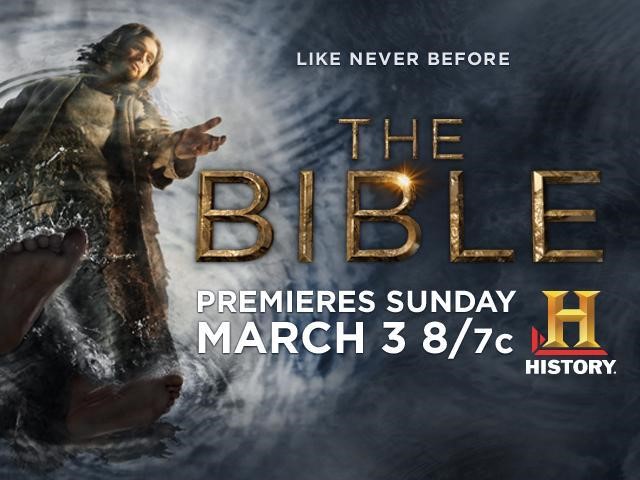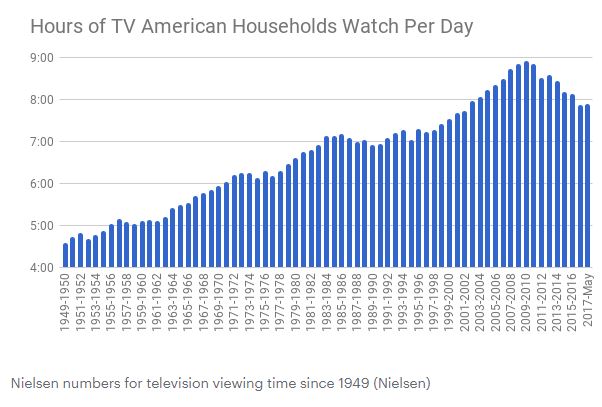Industry Analysis and Importance of SEED
INDUSTRY ANALYSIS:
Movies: SCI-FI and Fantasy Films Are Big Business!
According to the entertainment industry web site, Box Office Mojo, by the end of 2018, the U.S. box offices had grossed $11.9 billion.[1] The average for the past ten years is about the same. This proves Americans sure love their movies! But what kind of movies do they love most?
The top grossing (domestic) movies from 2008 to 2018 were:
- 2018: Black Panther
- 2017: Star Wars: The Last Jedi
- 2016: Rogue One: A Star Wars Story
- 2015: Star Wars: The Force Awakens
- 2014: American Sniper
- 2013: Hunger Games: Catching Fire
- 2012: The Avengers
- 2011: Harry Potter: Deathly Hallows
- 2010: Toy Story 3
- 2009: Avatar

- 2008: The Dark Knight
With the exception of only a few, the worldwide gross for #1 movies includes the same list, with Avatar being the highest grossing film at $2.7 billion! As of April 2019, Captain Marvel (which only opened a month prior) is already topping the charts at a worldwide gross of over $1 billion and that number is still growing! What does this tell us? Well, for starters, it indicates that superhero, fantasy and science fiction are the top three, best-selling genres for movies all around the world! In fact, if you look at the worldwide statistics, going all the way back to 1989, you will find the same three genres topping the charts.
THE GOOD NEWS: SEED perfectly fits all three genres!
The one exception in the above list is 2014’s American Sniper, which tapped into American pride and patriotism with a military-themed movie, loosely based on a true story. Well, SEED has that base covered too!
While the above list represents movies made by major studios, the market for independent films has expanded tremendously over the years amounting to worldwide grosses, which likewise number in the billions. But in these cases, the profit margins are significantly greater as the cost of these films were significantly less than those of typical studio lead productions. Indeed, the age of digital cameras and sound equipment combined with incredibly versatile, off-the-shelf software makes it possible to create high quality films and special effects at lower costs, which can thus generate much higher returns – and quicker.
The success of 1999’s ultra-low-budget (just $60,000) horror film, The Blair Witch Project, which earned over $248 million in worldwide revenue,[2] revolutionized how studios and distributors look at the production and marketing of films. The same can be said about the independent film, Paranormal Activity (produced ten years later), which was made for just $15,000. It has since grossed $193 million worldwide.[3] Talk about an amazing return on investment! Naturally, both projects have spun off sequels.
The Faith-based Audience: A largely untapped and growing demographic
When it comes to ultra-low budget, independent films, there is one genre that consistently falls into this category: Christian (or faith-based) films. Take the movie Courageous for instance. It was a Christian film by Alex and Stephen Kendrick of Sherwood Baptist Church, produced for $2 million. It was released in September of 2011, and as of April 2019, it has grossed nearly $35 million. This movie, like the Kendrick brother’s previous two – Fireproof ($500,000 budget – grossed $33.5 million) and Facing the Giants ($100,000 budget – grossed $10.3 million)[4] – appealed to a particularly neglected segment of the U.S. film market: the Christian audience.
Meanwhile, on TV…
In March of 2013, the History Channel miniseries, The Bible, produced by Roma Downey and Mark Bennett further proved how hungry people are for biblically themed, well-produced content. According to Entertainment Weekly, the first episode alone was seen by 13.1 million viewers,[5] which at the time, was the largest cable television audience to date. HollywoodJesus.com reported that (when looking at the previous 5 years), the show was #1 on TV and DVD, having been watched by 95 million viewers![6] One month after The Bible premiered, the mini-series’ finale boasted ratings that rivaled The Walking Dead,[7] which was one of the most popular TV shows of the time – despite airing against both that show and HBO’s Game of Thrones (which arguably carries the title of “the most popular show” of 2019). Entertainment Weekly reported:
He has risen — in the ratings!
History’s The Bible miniseries finale delivered the show’s largest audience since its record-setting premiere. The network reports that 11.7 million viewers watched the two-hour conclusion on Easter Sunday, despite The Bible airing against heavy cable competition during its second hour — AMC’s The Walking Dead had its season finale and HBO’s Game of Thrones had its season premiere, with both geek titans setting ratings records (our Walking Dead finale ratings discussion is here; the Game of Thrones ratings post is here).
What if we could tap into the Christian market and draw the kind of numbers that come with the secular comic-book superhero, fantasy and science fiction audiences combined? SEED aims to do just that!
TV: The Average American Watches 5 Hours of TV Per Day!
According to Neilsen.com, the average American spends 20% of their day watching TV! That’s nearly 5 hours a day, just sitting in front of the television!
 “Today’s consumers are watching more TV than ever, which makes understanding what and how they’re watching an essential part of any marketing campaign.”
“Today’s consumers are watching more TV than ever, which makes understanding what and how they’re watching an essential part of any marketing campaign.”
- Nielsencom>Measurement>Television
Audience Measurement
- Nielsencom>Measurement>Television
Keeping these statistics in mind, we pitch SEED the series as:
“It’s Lost meets The Unit, wrapped up in The X-Files.”
RollingStone.com rates Lost and the X-Files within the top 40 of the 100 Greatest TV Shows of All Time category considering all genres, all decades, and all television networks.[8] And HollywoodReporter.com lists Lost as #15 and the X-Files as #3 in their Hollywood’s 100 Favorite TV Shows list of the best TV shows ever.[9] And while The Unit didn’t place in either of these lists (primarily because it caters to a much smaller and more targeted demographic), it still had comparable Nielsen ratings[10] in terms of viewers and ranking in its first season with those of Lost:
Given the type of show SEED aims to be, we feel very comfortable with these statistics and more than confident that we have a very good target audience.
But television viewing is changing. Over the last few years, Neilsen reported that the number of people watching time-shifted television is up more than 20%. This means people are using devices like DVRs, which allow them to watch what they want, when they want, regardless of the time the show actually airs on a particular channel. And with high-speed Internet and new TVs shipping with Internet connections built into them, more and more people are watching TV programming via the web.
Internet and Mobile Devices: It’s All Going Mobile via the Internet!
Today, more and more people are watching video programming online and on mobile devices such as the iPhone and iPad. With the increase of mobile devices and access to online content, the average viewing time spent by Americans is exponentially increasing. At the time when SEED was first being developed (2009), this is what Nielsen had to say…
 More Time Watching All Screens
More Time Watching All Screens
In addition, Nielsen data shows that consumers’ time with TV, Internet and Mobile video continues to increase across the board.
Online video grew 13% in Q1 2009, driven by both strong brand marketing and large media events including the Presidential inauguration, the Super Bowl and March Madness. With broadband levels increasing in the U.S., online video audiences will continue to grow as consumers begin to upgrade their PCs to support increased video consumption.
Mobile video viewing has grown a significant 52% from the previous year, up to 13.4 million Americans. Much of this growth continues to come from increased mobile content and the rise of the mobile web as a viewing option.
Out of all different age groups, 18-24 year olds show signs of watching DVR and online video the same amount of time – time shifting 5 hrs, 47 minutes per month, and watching video online 5 hrs, 3 minutes each month.
– Neilsen.com
Naturally, ten years later, these numbers have grown. According to an article[11] dated 3/27/19, these are the more current statistics:
Americans, on average, spend 4.3 billion minutes watching VOD content from the four leading broadcast networks through a connected device.
* * *
Among the time that people 18-34 spend watching broadcast originated content on digital devices*, 71% of that viewing is spent on smartphones and tablets instead of computers. On the other hand, data shows among the time that people 18-34 spend watching content originated from cable networks on digital devices, 55% of that viewing is spent on mobile devices instead of computers. When specifically looking at consumption of content originated from digital-first publishers, 91% of the time spent on a digital device by the 18-34 demographic occurs on mobile devices.
It doesn’t take much searching on-line to see the steady increase in media consumption over the past decade. In fact, just concerning television viewing alone, TheAtlantic.com said this in an article[12] dated 5/30/18:
“Americans are still watching more than 7 hours and 50 minutes per household per day.”
But it’s not just television. As the following Nielsen chart shows, we love media in general:
In a report[13] dated 7/31/18, Nielsen stated,
American adults spend over 11 hours per day listening to, watching, reading or generally interacting with media.
According to the first-quarter 2018 Nielsen Total Audience Report, nearly half an adults’ day is dedicated to consuming this content. In fact, American adults spend over 11 hours per day listening to, watching, reading or generally interacting with media. Behind this surge are the growing use of new platforms, as well as the younger, multicultural generations who leverage them.
This same article stated…
Overall video use—time spent with a TV set, computer video and using video focused app/web on smartphones and tablets—netted out to nearly six hours per day for U.S. adults during first-quarter 2018. Compared with the previous quarter, this viewing time increased by 11 minutes, with six of those minutes stemming from TV-connected devices.
THE IMPORTANCE OF SEED:
Now given what we’ve just read, please consider this:
Nothing in the Bible tells the world to come to the Church.
Rather, Yeshua/Jesus told His Church to GO into all the world.[14]
Where are the people of the world spending the majority of their time? Looking at the statistics we have presented here, it’s not hard to see where they are. At least in America, they are glued to the television, their computers and mobile devices – largely consuming a steady diet of media content produced by the enemy of our souls. It’s not a stretch to imagine the same happening in most First World countries. And we’ve already seen the worldwide statistics for movie attendance. In order to reach the people of this world, we must go where they are.
However, we must do this while keeping in mind that people don’t go to the movies, nor watch episodic television to be “preached to” – they can surf to TBN or CBN if they wanted that (but the statistics presented here do not reflect a habit of them doing so). They spend billions going to the movies and watch millions of hours’ worth of episodic television every year because they wish to be entertained. So, the objective then is to find something that the world will want to watch, that also plants “seeds” of truth, which the savvy Believer can then water and nurture in order to reap a harvest with their friends and family who would otherwise never go to church (or watch TBN or CBN).
When discussing his movie, The Passion of the Christ Mel Gibson once said something along these lines:
“My job is to put compelling images up on that screen. Your job is to do the follow up.”
In similar fashion, this is the mission of SEED.
[This article is also available in PDF format. CLICK HERE to download]
[1] https://www.boxofficemojo.com/yearly/
[2] https://www.boxofficemojo.com/movies/?id=blairwitchproject.htm
[3] https://www.boxofficemojo.com/movies/?id=paranormalactivity.htm
[4] The above stats are according to the data given for each entry on IMDBPro.com (as retrieved 4/24/19).
[5] https://ew.com/article/2013/03/04/bible-ratings/
[6] https://www.wayoflife.org/reports/the_christ_of_lightworkers_media.html
[7] https://ew.com/article/2013/04/01/the-bible-easter-ratings/
[8] Lost came in at #39 and X-Files at #28 of the Top 100: https://www.rollingstone.com/tv/tv-lists/100-greatest-tv-shows-of-all-tim-105998/lost-2-111198/
[9] https://www.hollywoodreporter.com/lists/best-tv-shows-ever-top-819499/item/game-thrones-hollywoods-100- favorite-821364
[10] The graphs were taken from the Wikipedia entries for both shows.
[11] https://www.nielsen.com/us/en/insights/news/2019/uncovering-trends-in-media-content-across-tv-and-digital.html
[12] https://www.theatlantic.com/technology/archive/2018/05/when-did-tv-watching-peak/561464/
[13] https://www.nielsen.com/us/en/insights/news/2018/time-flies-us-adults-now-spend-nearly-half-a-day-interacting-with-media.print.html
[14] See the Great Commission: Matthew 28:19,20 and Mark 16:15.




















